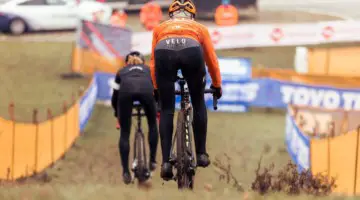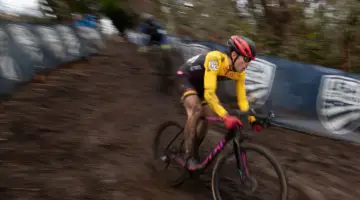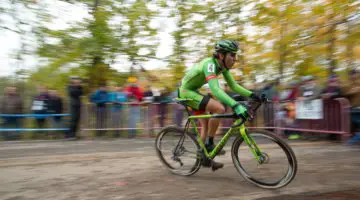Tips for an Effective Practice
Safety First: Safety must be the first priority. Think of all the precautions race coordinators must take. There are good reasons races don’t start with a downhill sprint on pavement or include bunny-hopping concrete barriers. Mimicking race day should mean mimicking the safety provisions as well. Like race promoters, you should always have a phone handy if you need to call for help, and at least talk through a few emergency plans for worst case scenarios. Establish ground rules, like people checking out with a leader if they decide to leave practice early.
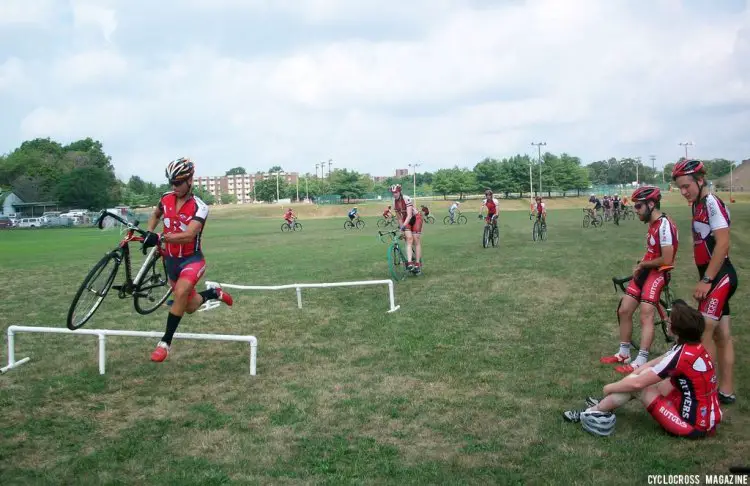
Learning remounts and dismounts is key for taking barriers smoothly. photo: Molly Hurford
Shorter is Better: Create shorter lap lengths than a real race. One-mile or shorter courses are easier to organize and they prevent riders of varying talent from spreading out too far. Your group won’t waste time trying to reorganize the starting line for the next block, and because safety is the primary goal in the end, shorter laps mean better overall visibility and motivation when you can see your competition.
Skills Work Through Course Design: Add natural skills work into the racing. You can do this by having a higher density of technical features, barriers and dismounts per minute than a normal race, and avoid monotony and mastery by changing barrier locations, amount of running and occasionally add a few new wrinkles to the course. The more situations you can tackle in the season at practice, the more relaxed you’ll be when tackling a new course on a weekend.
Chunk it Up, Mix it Up: Focus on several short races, not 45 to 60 minute sessions. Training should emphasize manageable chunks of 15 to 20 minute racing rather than one big push. “Multiple short races are really key,” says Yee. “With shorter races, you’re essentially combining high-quality interval training with some skills work, in a much more fun, competitive way than sitting on the trainer or riding solo.”
Yee’s practice often has a short two-lap warm-up race, followed by a mix of handicap races, relay races, and singlespeed laps and even some “winner picks the next race’s rules” heats.
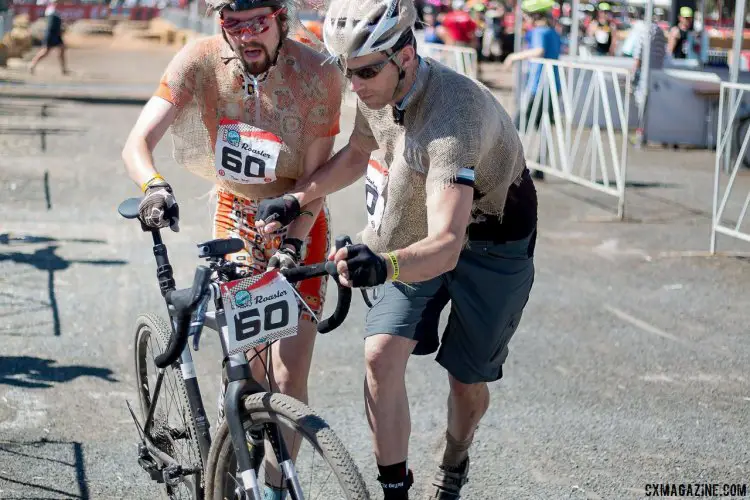
You don’t have to attend CykelScramble or Nationals to enjoy relay racing fun. It’s an effective way to incorporate short, intense intervals into your practice in a social yet competitive fashion.
Practice Winning = Winning Practice: Another value in having shorter races, according to Yee, is that with different rules and staggered starts, everybody, at some point in the season, has a chance to win a race. “Learning to race for a win, even if it’s just practice, is dramatically different than racing for 16th at your local race, and it’s a position and skill everyone should have a chance to experience and develop,” says Yee. “Plus it’s a lot more fun than always finishing in the same position!”
Copy the Coach: Lastly, look to Geoff Proctor’s MontanaCrossCamp’s drills for inspiration. His two-up cornering races look like a fun way of building skills, getting the heart rate up, and having some friendly competition.
























